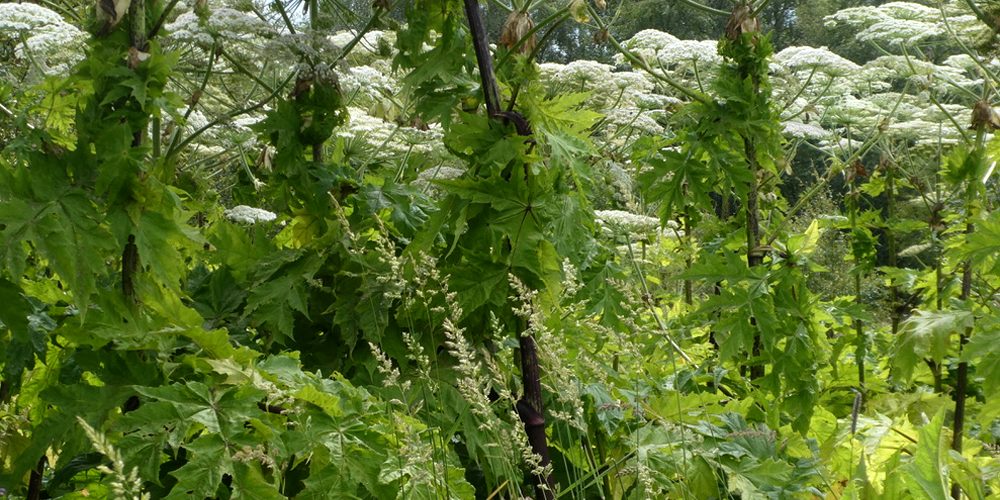Apart from the leachate escaping from the Tarbolton Landfill site, there a new environmental threat and that is that Giant Hogweed will spread from the site to the Water of Fail and to the Ayr at Failford and downstream. The scale of the problems is vast and with SNH and SEPA both unable to help authorise or instruct control, Ayrshire Rivers Trust felt that they must intervene or face widespread re infestation of the lower catchment by this noxious and highly invasive plant.

Contact with this dangerous plant can cause blisters to skin, photophyto dermatitis and can lead to blindness. It also leads to severe bank erosion and reduced spawning and poor water quality.

A new outbreak of this invasive plant that again threatens to spread to the River Ayr where ART have been controlling and winning the battle with this plant for 11+ years. Left uncontrolled this will be a major setback to the Water of Fail and the lower River Ayr from Failford downstream
Due to the stage of development (many flowers had already set seed) ART decided that cutting and burning flower heads prior to spraying with glyphosate was the only real option to prevent millions of seeds being generated and released this year. While they have tacked some of the plants, they haven’t been able to spray or remove flowers from them all; only the ones that pose the greatest threat of escape downstream. If ART can find the resources, they will return and spray more but really SNH should apply the Wildlife and Natural Environment (Scotland ) Act 2011 and force entry and instruct a contractor to perform control (that could be ART and they would be willing to do so). SNH have the legal powers to do this and seek recompense from the operator (admittedly they are in receivership) but SNH should act and act quickly.
I’ve added a link to a You Tube video shot today that illustrates the level of infestation across the site https://www.youtube.com/watch?v=2eUkRIPDOXY



Why don’t they use grazing animals instead? Isn’t it more ecofriendly?
That’s a very valid consideration Nicola however, experience has shown that it doesn’t work as part of an eradication strategy for several reasons. Cattle grazing plants on a riverbank is best avoided as the damage they can do to bank stability leads to pollution and erosion and this is best avoided.Also, they don’t eradicate the plant and their grazing can lead to a profusion of flowers and seeding which is often a stress response after the plant is broken or damaged. It is too eratic to provide any effective control that it is best avoided. The amount of chemical spayed in any season now after 10+ years of control is very small and therefore has limited impact on the environment but a great affect on the target plant.